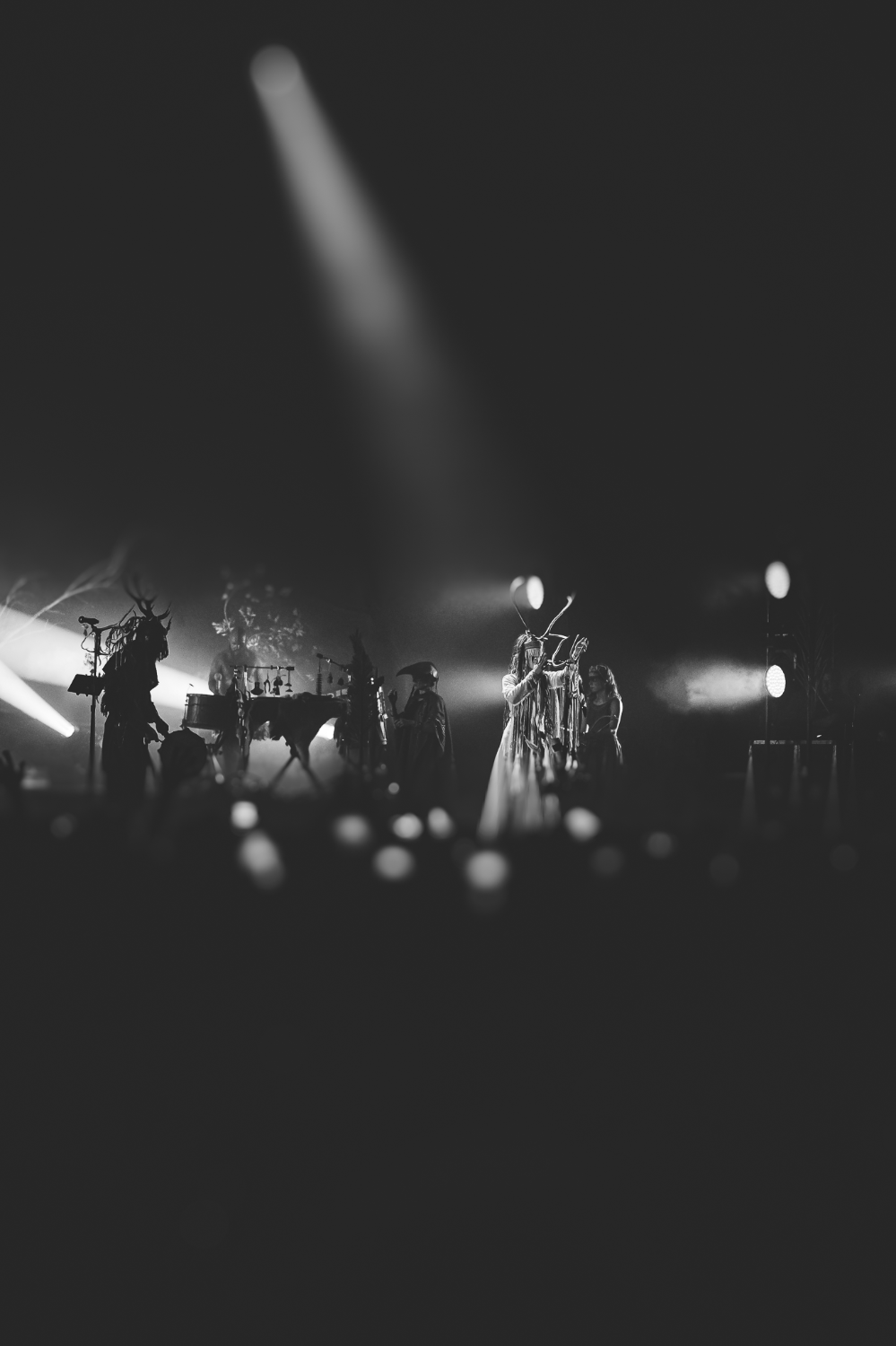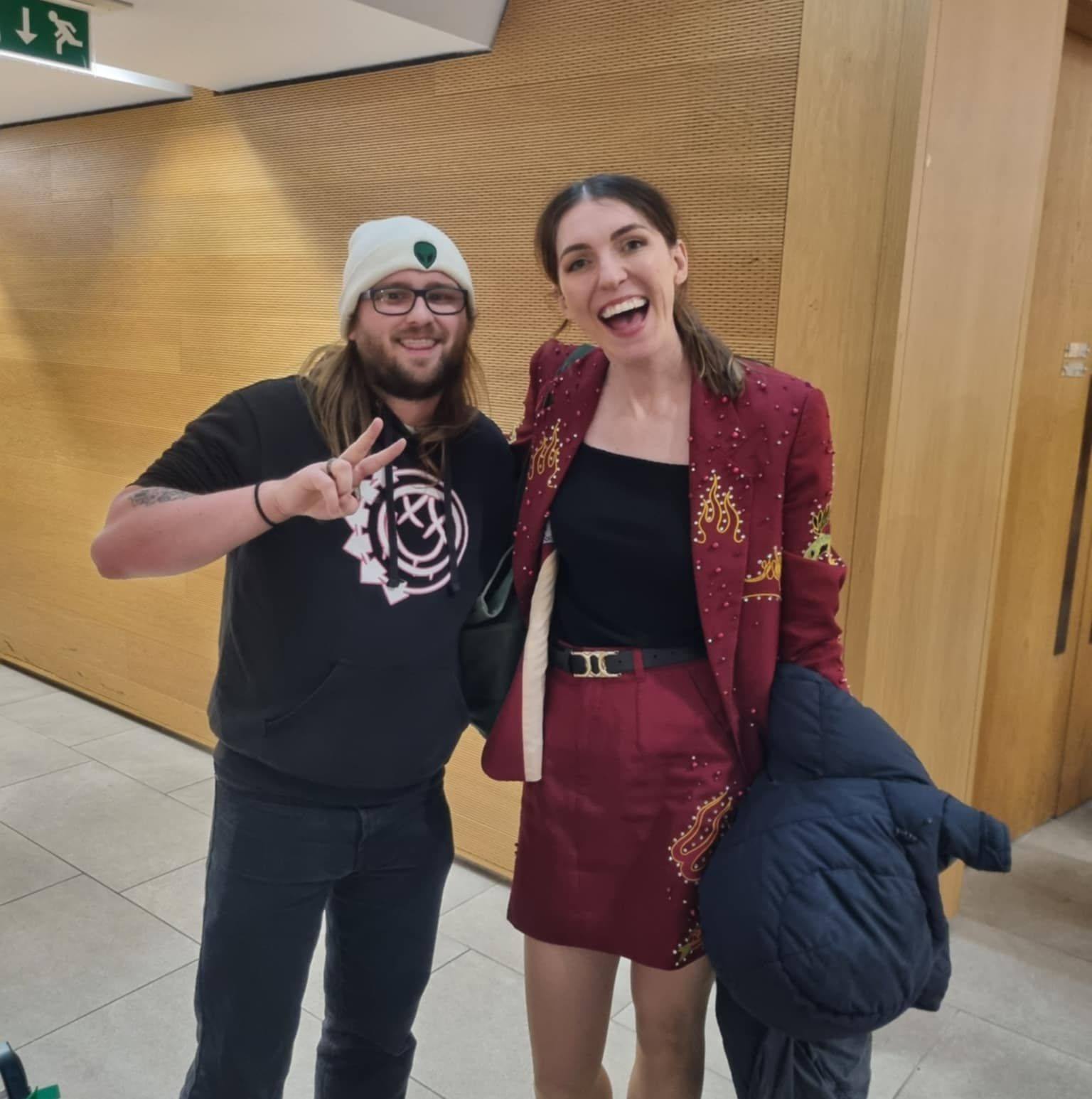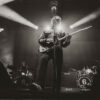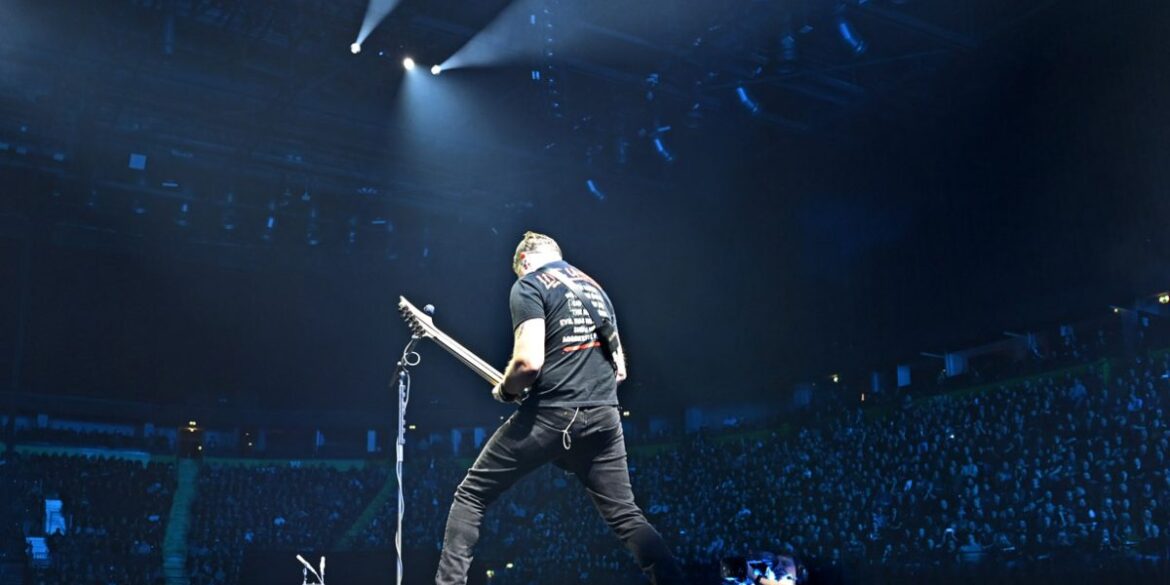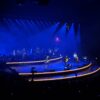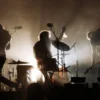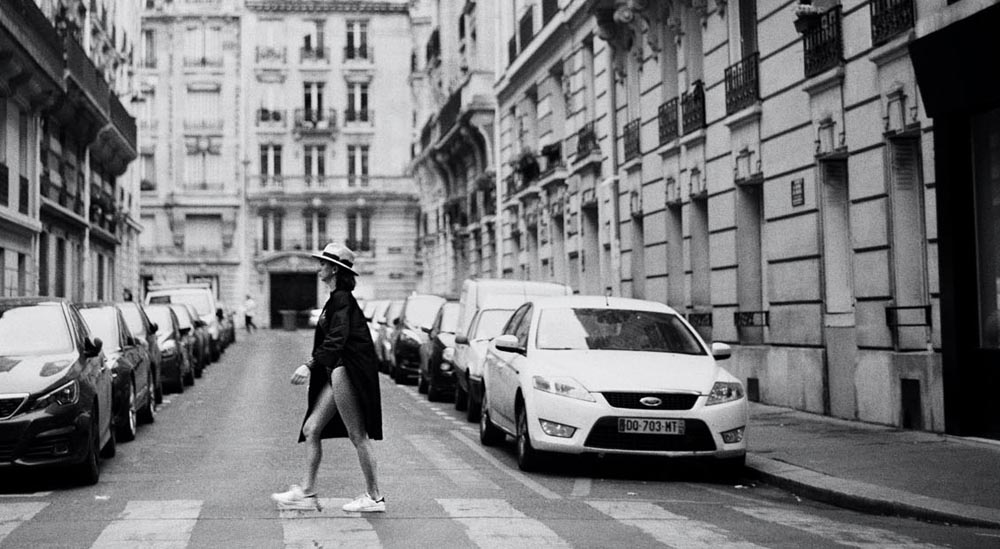Heilung are a very hard band to review. I usually begin these things by setting the scene, talking about the venue, my journey there, and the build-up of anticipation. But this evening, it’s impossible not to start with the band itself. Formed in Denmark back in 2014, Heilung label themselves as creators of “amplified history from early medieval northern Europe.” At first glance, that sounds more than a little pretentious, doesn’t it? Honestly, I was sceptical too—especially when every show is billed as a “ritual” rather than a concert. Still, any apprehension I had disappeared almost immediately as I got swept up in the band’s unique aesthetic and immersive soundscape. That’s the energy I want to hold onto as I take you through tonight’s experience.
Tonight’s “ritual” takes place at the iconic 02 Apollo—a sizeable venue that Heilung managed to sell out with remarkable speed. As I approach, the significance of their rise in popularity becomes instantly clear: a queue stretches out of sight, snaking its way down the street. Inside, I carve out my usual spot just in front of the sound stage. For me, it’s the perfect balance: close enough to feel connected to the energy of the front-row enthusiasts, but far enough back to avoid the full force of the front crowd chaos. Plus, the sound here is always pristine.
For bands with such a focus on atmosphere and storytelling, it’s common to skip a support act entirely, letting the mood simmer in anticipation. Surprise, then, that Heilung brought on Eivør and her touring band to open the night. Like Heilung, Eivør is almost impossible to pin down—her music is equal parts folk, metal, electronic, and classical. This could easily become a muddled mess in less capable hands, but Eivør has the skill of someone who’s spent decades honing her craft. Her 30-minute set flies by, each song seamlessly blending disparate genres and energies. It’s the rare support act that can command raucous applause usually reserved for the headliner, but that’s exactly what happens when Eivør closes her set with a bow. If Heilung have chosen her to open, you know they have no intention of being upstaged—they’re gearing up for a true spectacle.
That spectacle is confirmed when a huge curtain emblazoned with a rune is drawn across the stage, shutting out the crowd’s view and cranking anticipation up another notch. Instead of the rote playlist of rock tracks between bands, the venue is filled with the sounds of the forest—crickets, distant thunder, the hush of wind through leaves. The crowd tightens, bodies pressing in as the venue reaches capacity. When the house lights finally drop, the stage is revealed, and collective anticipation hangs thick as the artificial fog rolling across the stage. It’s time for the ritual to begin.
For several minutes, there is only stillness—a quiet that lets you drink in the carefully constructed set. The stage is dense with trees, shrouded in haze, dotted with skulls and runes. Looming at the back are three enormous drums. Whatever this ritual holds, one thing is certain: it’s going to be loud.
Two figures emerge, almost apparitions, bearing a massive branch and a steaming bowl. They move about the stage, sending wafts of aromatic smoke over the crowd—a gesture that blurs the line between audience and performance. This isn’t a gig in any traditional sense; it’s a convergence of theatre, music, and living history. The full ensemble, nearly 20 strong, moves onto the stage: drummers, singers, actors, all dressed in elaborate, period-inspired attire. They form a circle around the lead singer, who is adorned head-to-toe in traditional shaman regalia, and lead the crowd in a haunting chant. There’s a cult-like feeling to the proceedings, but that’s the whole idea—Heilung’s music is steeped in old Baltic and Norse traditions. If you’ve seen The Northman or played any of the Senua’s Saga games, you’ll have a sense of what’s in store—just imagine all that coming alive in concert.
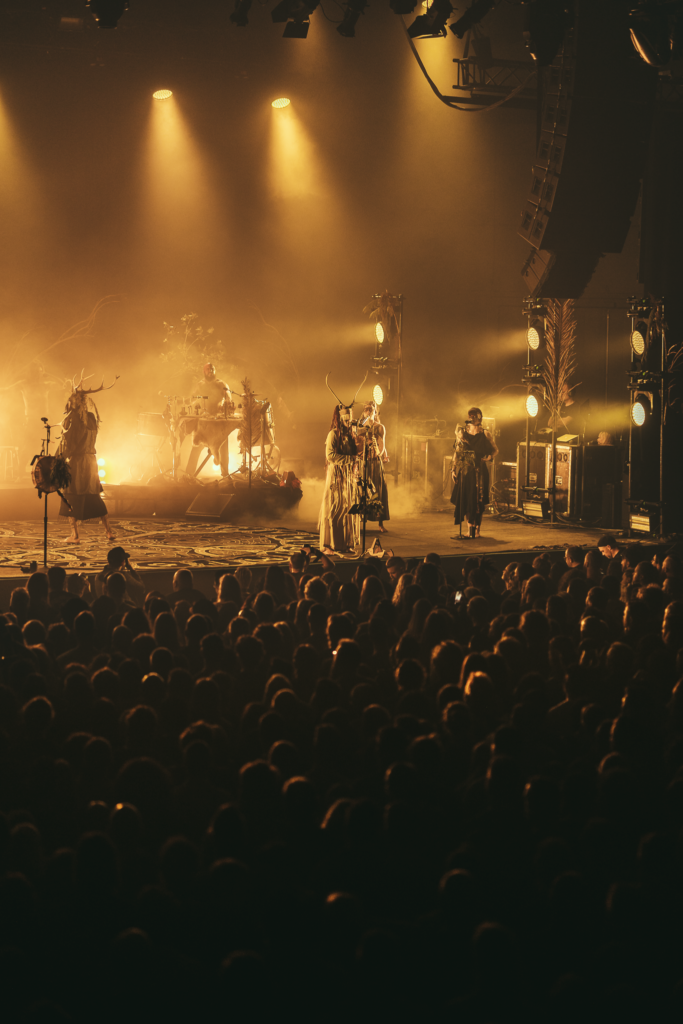
Then the music begins. It’s difficult to tell where one song ends and another begins; songs flow into each other without obvious breaks. Normally, that would bother me, but here it suits the immersive, hypnotic mood. The band uses everything at their disposal—throbbing drums, throat singing, bone rattles, even handmade instruments fashioned from antlers and wood. Every movement is intentional. At times, the vocalists are whispering delicate invocations; moments later, they’re unleashing guttural roars that resonate deep in your chest. The sound is primal, physical, and inescapable. Every sense is engaged: you can smell the smoke, feel the vibration of the drums, see the flicker of torchlight, and taste the electricity in the air.
It quickly becomes apparent that the audience is as much a part of this ritual as the performers. People sway, chant, and some even weep. I notice couples standing arm-in-arm, friends clasping hands, strangers lost in trance-like states. It’s deeply communal, something rare in most live gigs. The sense of presence is overwhelming—not just presence in the venue, but presence in a different place and time entirely. Heilung’s uncanny ability to transport their audience across centuries is no small feat, and it’s even more impressive live.
As the ritual progresses, the dynamic shifts from song to song—or perhaps movement to movement is a better phrase. Percussive barrages build into ecstatic crescendos only to ebb and transform into quiet, meditative passages. The band rarely addresses the crowd in conventional ways. There are no “thank you, Manchester!” moments. Instead, everything flows in ritual fashion—invocations, blessings, and a final, sweeping benediction. Even those unfamiliar with the finer points of Heilung’s discography are swept up in the sheer force and sincerity of the proceedings. It’s less about knowing individual tracks and more about surrendering yourself to the overall experience.

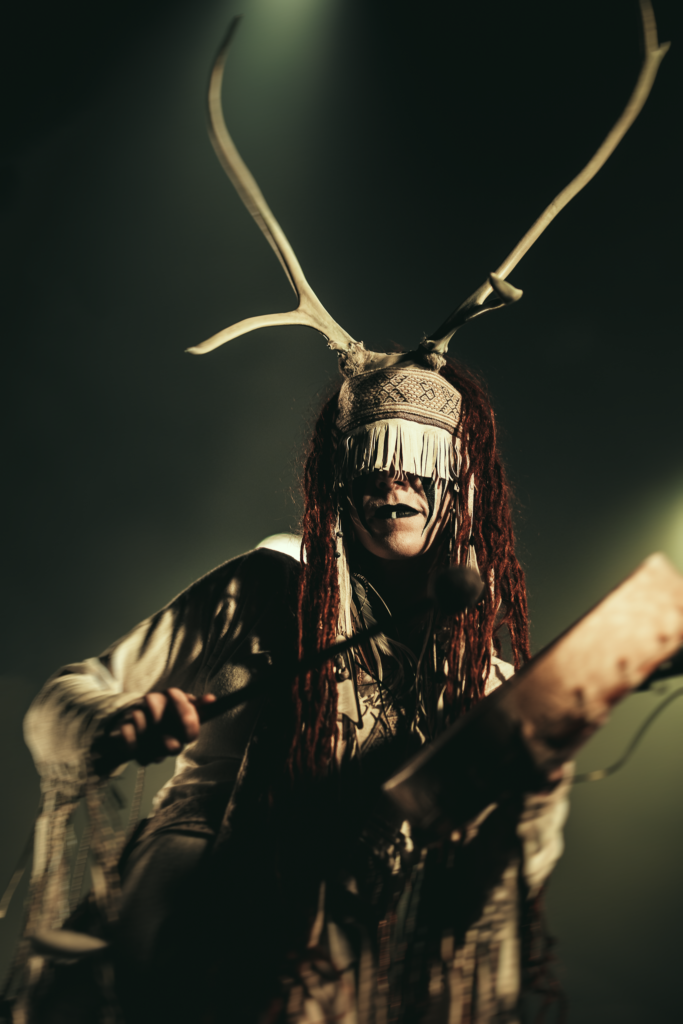
By the final act, the audience is emotionally wrung out but visibly grateful. They roar their appreciation as the band members embrace and bow, filling the room with immense gratitude that feels almost spiritual. As I make my way out onto the bustling street, the hum of ancient chants and pounding drums still reverberates in my bones.
It’s rare to come away from a concert feeling not just entertained but transformed. Heilung manage to blur the lines between gig, ritual, and immersive theatre, inviting the audience into a world that feels both impossibly ancient and startlingly immediate. The word “show” barely seems to cover it. More than anything, Heilung prove that music, at its best, can be an experience that shakes you to your core.
If you have even the vaguest interest in folk, mythology, or just want a live performance that dares to be different, you owe it to yourself to see Heilung at least once. Scepticism is understandable, but as I discovered, surrendering to the ritual is half the joy. In a world full of formulaic concerts, Heilung stand as a powerful reminder of how thrillingly strange, communal, and cathartic live music can still be.


